Seeing a hundred dual-cab utes on your way to work is becoming something that is no longer exclusive to those of us who live in country towns. Dual-purpose trucks like this, the 2018 Nissan Navara, are becoming more prevalent in cities around the country, and there’s a good chance you’ll see as many of these double cab utes on your daily run to school or work as you do SUVs.
The same can be said in the outback, too: as my partner and I found out on a recent trip from Adelaide to Alice Springs, the mix of models out there in the red stuff is made up largely of big SUVs and dual-cab utes.
While the vast majority of vehicles were Toyotas (either Land Cruisers or HiLuxes), there were also quite a few Nissan Patrols and Nissan Navaras in the mix. So, even though the colour of our Series III Navara ST-X model was enough to make it stand out, the vehicle itself wasn’t as rare a sighting as you might think.
.jpg)
Plenty of them had thousands of dollars of modifications, including changes to the suspension and wheels and tyres, not to mention tray boxes, roof racks and bullbars.
We travelled during the recent school holidays so there were family caravanners aplenty, and those wizened adventurers known as ‘grey nomads’ were present in big numbers, too.
So, with no mods, no aftermarket accessories attached, and no caravan in tow, did our unmodified Nissan Navara ST-X dual-cab do a good job in the dusty centre of this big, beautiful country? Read on to find out.
Nissan Navara 2018: St-X (4X4) (Sunroof)
| Engine Type | Diesel Turbo 4, 2.3L |
|---|---|
| Fuel Type | Diesel |
| Fuel Efficiency | 7.0L/100km (combined) |
| Seating | 5 |
| Price From | $29,810 - $35,970 |
| Safety Rating |
|
Is there anything interesting about its design?
The recent third update to the Nissan Navara dual-cab range didn’t include any cosmetic adjustments, but that’s not necessarily a bad thing because I reckon the Navara is one of the more handsome utes in the market.
Changes to the rear suspension have meant that the ride height has increased, giving it a bit of a nose-down look when you don’t have any weight in the tub. It drops a bit when you add mass, but we had hardly anything in the tray the whole time we had it, apart from a second spare wheel.
The fact you can get it in a bold, bright red (Burning Red) like this is a bit of a selling point, I think – some brands aren’t as adventurous with their colour palettes. This one is a no-cost option, and there are other free paint choices such as Polar White and Cosmic Black. Metallic paint options (adding $550) include Brilliant Silver, Deep Sapphire (a very dark blue), Hornet Gold (that’s the orange hue you sometimes see), Slate Grey and the pearly White Diamond.
.jpg)
The mix of muscled arches, nicely designed 18-inch wheels, and the little rear spoiler that lips off the back of the tailgate (which doubles nicely as a coffee cup holder when you’re up for the sunrise) all combine for a solid looking truck. It looks ready to tackle the bush straight out of the box, but I have to admit, I was a little envious of the highly accessorised models I saw out beyond Marree in northern South Australia.
Even so, this spec has standard side-steps and roof rails (making the fitment of roof racks that much easier). It’s fair to say there were no Navara N-Sport models out where we went – those sports edition models, which come with a bodykit, aren’t as good at clearing rocks or ruts – and there were plenty of rocks and ruts on our route.
How practical is the space inside?
The current-generation version of the Navara features one of the most SUV-like spaces in the segment, and in a number of respects the interior is ageing well.
Our ST-X had two factory-fit options on it: an electric sunroof (the Navara is the only ute in the segment with an available sunroof, at a cost of $1000) which made those big-sky mornings even more amazing – and the leather-seat option pack – consisting of leather trim on the seats, leather on the door trims, electric seat adjustment for the driver’s seat, heated front seats and seat-back pockets for extra rear-seat storage – costing $1500. The heated front seats were a godsend as we took off just after the desert dawn broke on three of our four days on the road and it can get bloody cold out in the desert – we saw 2 degrees celsius on the dashboard in Coober Pedy and Alice Springs.
.jpg)
Even so, should you have to pay $1500 for leather trim and heated seats in the flagship Navara? I think not. The regular range-topper doesn’t have rear map pockets, either, which is poor form from Nissan. They come in very handy, whether you’re touring with kids or not.
When you’re on the road for up to 10 hours a day as we were, little things like storage cubbies get tested out. The Navara offers two pop-out cup holders up at the top edges of the dashboard, and they did their job nicely when stowing our morning coffees. There are big cup holders between the front seats, too, which played host to 600ml water bottles more often than not, and there’s enough storage for snacks, a wallet, phone and keys, too. Some other utes can’t match the Navara on that front, and the dash-top 12-volt outlet and storage dish is ideal if you fit your own third-party navigation screen. We didn’t need to – instead, we used the 7.0-inch touchscreen media system’s built-in nav, which did the job, easily dealing with dirt-road routes. It knew the Oodnadatta Track, and figured out where we needed to turn off to go to Coober Pedy, too.
The media system isn’t the best in the segment, not by a long shot: there’s no Apple CarPlay or Android Auto, and the display is a bit pixelated (even the otherwise very handy surround-view camera is showing its age), no smartphone mirroring tech and a pixelated display work against what is otherwise a pretty usable system.
.jpg)
Series III Navara models now get ISOFIX rear child-seat anchor points in addition to top-tether straps, but we didn’t have anyone in the back during our trip. Instead we took advantage of the fact the seat base can be folded up and held in place by a hook on a strap. It left us with a decent sized spot to store our bags, meaning they wouldn’t get dusty on the back tracks.
If you need to put people in the back row, the Navara’s back seat will do the job, but it probably wouldn’t be our number-one suggestion for rear-rider comfort if you plan to traverse long distances – I reckon that would be the Ranger, or a Colorado / D-Max. The seat base isn’t as cushy as it could be, though the space is a bit tight for shoulder room and legroom if you’re hauling adults around. At least there are rear seat air-vents.
.jpg)
It is decently roomy considering the fact it’s among the smaller dual-cab utes in the segment: it measures 5255mm long (on a 3150mm wheelbase), 1850mm wide and 1855mm tall.
Tray dimensions are competitive: the internal tub measurements are 1503mm long, 1560mm wide (but only 1130mm between the wheel arches, so it’s not broad enough to cope with an Aussie pallet, if that’s what your adventure calls for), and 474mm deep. The ST-X comes with a full tray protector / tub liner, but there is no tonneau cover or hard lid. You can option one from Nissan’s extensive accessories catalogue if you need it. It would a damn sight more useful than the chrome sports bar at the back, I reckon.
.jpg)
Does it represent good value for the price? What features does it come with?
As a basis to spend more money modifying, the Navara makes a strong case. You will constantly find decent promotions online or in dealerships – keep your eye out for driveaway deals, as you could save thousands.
The official asking price for our Navara ST-X automatic model was $54,490 before on-road costs, and if you want it, you can get a manual version of the ST-X at $51,990. Remember, that price doesn’t include the optional sunroof and leather, nor the tow kit our vehicle had; some rival utes have a standard tow kit.
Even so, the ST-X is a relatively affordable top-spec ute – it’s even more tempting when you consider many mid-spec models are positioned not far from the range-topping Navara.
ST-X models have standard kit including a surround-view camera system, rear parking sensors, auto wipers, LED headlights with auto on/off function, 18-inch wheels with a full-size alloy spare, a sound system with six speakers, and a 7.0-inch touchscreen media system with Bluetooth phone and audio streaming plus USB connectivity, but no smartphone mirroring.
.jpg)
Also standard is dual-zone climate control, push-button start and keyless entry, plus an auto-dimming rearview mirror, carpet mats and three 12-volt outlets. A digital speedometer will be fitted in all models built from June 2018 – our car didn’t have one.
Nissan’s clever Utili-Track adjustable tie-down system is standard on the ST-X, which is super handy if you need to load in bulky items, but not great if you only have small things to throw in the tray.
Every Navara dual-cab has an electric sliding rear window above the front of the tub, which is good if you have a dog in the tub and need to keep the treats up. The rear step bumper is grippy, but pretty high up for shorties to reach – and the increased ride height of the Series III model means tub access is more difficult than it used to be.
What are the key stats for the engine and transmission?
While many of the vehicles we saw in the outback had V8 turbo-diesel engines, we had nowhere near that sort of mega grunt. That said, Nissan Navara SL, ST and ST-X models come with a 2.3-litre twin-turbo four-cylinder diesel motor that offers up pretty competitive specifications.
There’s a decent amount of horsepower to keep things moving: 140kW of power (at 3750rpm) and 450Nm of torque (from 1500-2500rpm). And the outputs are the same whether you choose the six-speed manual gearbox or the optional seven-speed automatic transmission.
.jpg)
Payload capacity is rated at 931kg for the regular ST-X, but with the optional packs that drops by 11kg, to 920kg – not the best, but still better than some competitors. The Navara dual-cab range has a gross combination mass (GCM) of 5910kg.
The Navara dual-cab range has a towing capacity of 750kg for an unbraked trailer, or up to 3500kg for a braked trailer, putting it equal among the best of its peers. And that towing figure applies to manual and automatic versions, too – some rivals can’t claim that; the Toyota HiLux and Mitsubishi Triton, for instance.
How much fuel does it consume?
Claimed fuel consumption for the Nissan Navara ST-X dual-cab diesel automatic is listed at 7.0L/100km. It’s hard to get close to that, unless you’re driving like a nanny.
Over our 2418km of mixed driving – with plenty of country B-roads, more than a thousand kays of unsealed road, some Stuart Highway cruising at about 130km/h, and some slower sight-seeing speeds here and there – our average worked out a 9.93L/100km.
.jpg)
That’s still pretty good, considering we were in a hurry a lot of the time. But calculating the figures at the pump showed that our displayed fuel consumption was a bit optimistic – at the conclusion of our trip, it was showing 9.1L/100km.
Here’s a rundown of our fuel-ups:
Adelaide to Clare: 269km – 25.58L
Clare to Marree: 512km – 47.71L
Marree to Coober Pedy: 369km – 39.24L
Coober Pedy to Marla: 226km – 23.31L
Marla to Uluru: 589km – 60.22L
Uluru to Alice Springs: 453km – 44.02L
_0.jpg)
Total distance travelled: 2418km
Diesel used: 240.08L
Average fuel consumption: 9.93L/100km
With an 80-litre fuel tank capacity, if you’re using what we did, and driving how we did, you should see a theoretical range of about 820km. That range will decrease the more weight you take with you, and you can expect it to be a fair bit worse if you’re towing.
What's it like as a daily driver?
The vast majority of my driving on this trip wasn't what most people would consider 'everyday running around'. But in Adelaide before we left, we spent a couple of days getting from A to B in the Navara, and it proved quite good in that regard.
With its refined drivetrain, it coped with traffic jam tussles and highway overtaking really easily, but there's a bit of turbo lag to contend with when you're taking off from a standing start.
.jpg)
And the Series III model's improved steering makes for less arm-twirling than before when taking on roundabouts or parking spaces. The updated model's firmer suspension isn't as cosseting over bumpy sections of urban roads, though.
What's it like for touring?
When I pitched the idea of driving from Adelaide to Alice Springs to Nissan Australia, I was sort of hoping they would offer me a Patrol. I wouldn’t have appreciated the petrol V8’s impact on the fuel bill, but I knew it would have been a very comfortable cruiser to lap up long distances.
When I was told that a Navara could be arranged, initially I wasn’t as excited. It wasn’t that I didn’t think the Navara was up for the task – I was more concerned about the level of comfort that would be on offer from the Series III model on the rougher road surfaces we were bound to come across from Adelaide to Alice Springs.
.jpg)
I had thought that the reworked five-link coil-spring rear suspension – now with dual-rate rear springs – would have been a bit too stiff. Having driven the ST-X for a regular review recently, I knew it was firmer than the model that came before it, and I was worried how that – plus the 18-inch wheels – could affect our experience in the cabin over long drive days.
It took only a few hundred kilometres on the road – and eventually on some unwieldy gravel sections – for my trepidation to be mostly allayed. Sure, it isn’t magic carpet-like for ride comfort, and sometimes it felt too rigid and jittery over corrugations – some more weight in the tray would certainly have helped out. However, having driven competitor utes on similar terrain, the Navara isn’t as fiercely sharp or uncomfortable as some. In fact, my partner said to me at one stage along our route that she “expected it to be a lot less comfortable”.
And while we didn't haul a lot of gear with us on this trip, I can attest that the Series III Navara is considerably better than the model that preceded it when it comes to dealing with weight in the tray. I have driven this new one with 500kg in the tub and it barely noticed the weight – I had previously driven a Series II Navara ST with 650kg in the tray, and if I’d bought one of those models, I would have been heading straight to my closest Old Man Emu stockist for an upgrade.
_0.jpg)
The Series III update has also included some changes to the steering ratio, which it needed desperately. What Nissan’s engineers did, essentially, was decrease the number of turns from lock to lock (now 3.4 – was 4.1), which makes it more responsive to steering inputs, easier to park, and generally less tiring to spend hours at the tiller, because you’re not doing as much arm twirling, and it’s more intuitive than it was.
That said, you still need to be conscious of the big 12.4m turning circle, and utes like the Ford Ranger, Holden Colorado and even the Mitsubishi Triton have better steering involvement and accuracy.
While the fuel use could have been better, the drivetrain did little wrong. It offers strong in-gear acceleration – which is really important when you’re overtaking road trains on the highway, or adjusting your speed based on the conditions of the road or unsealed surface under the tyres. And while it can be a little sluggish to take off from a standstill, there wasn’t a whole lot of stop-start traffic where we were.
.jpg)
We spent a lot of time on unsealed surface, but unlike some of the other off-road reviews you’ll find here at Adventure Guide, we weren’t deeply exploring the 4x4 capabilities of the Navara. We did use the 4WD system, switching on the fly from 2H (two-wheel drive high range) to 4H (four-wheel drive high range) to ensure better traction over some of the slipperier surfaces. We didn’t need to use 4L (four-wheel drive low range).
While the going was pretty rough on some sections of the Oodnadatta Track and the roads that lead to it and away from it, we kept our tyre pressures at the recommended settings. It wasn’t sandy enough to justify lowering them. The Toyo A25 Open Country A/T rubber didn’t reveal any surprises in terms of grip – they held on fine, but not exceptionally well.
.jpg)
If we’d had more time, we probably would have headed further off the beaten track, and I had confidence that the Navara ST-X’s off-road specs would get us pretty much anywhere we wanted. It has an aggressive approach angle of 33.2 degrees, while the departure angle (without towbar) is 28.2 deg, and the rampover angle is good, too, at 24.7 deg. Unladen ground clearance (mm) is 228mm – not bad, either.
Ours was one of the few dual-cab utes in the outback that wasn’t towing a big caravan behind it – and I wouldn’t be buying a Navara if I was considering towing anything much bigger than 2000kg. When we recently had a Navara ST-X in the office, it was tasked with towing a 2880kg caravan, and it wasn’t a very enjoyable experience.
Warranty & Safety Rating
What safety equipment is fitted? What safety rating?
If a five-star ANCAP crash test rating is important to you, the Navara ticks the box. It scored the maximum rating back in 2015, and it retains the same score in 2018. Plus, if you plan to accessorise your Navara, the same score applies to models fitted with a genuine steel bullbar or genuine aluminium bullbar.
If it were tested against today’s ANCAP criteria, the Navara wouldn’t get five stars, though, because unlike some competitor utes there are no smart safety systems like auto emergency braking (AEB – standard on its cousin, the Mercedes X-Class), forward collision warning, lane-departure warning and/or lane-keeping assist, active cruise control, blind-spot monitoring. An educated guesser might predict a 2019 update with some of those systems, but there’s nothing confirmed as yet.
.jpg)
Still, the standard safety gear consists of seven airbags (dual front, front side, full-length curtain and driver’s knee). Only the dual-cab pick-up models get a reversing camera fitted as standard – the cab-chassis models miss out on a camera.
As I mentioned earlier, the ST-X model has Around View, a surround-view camera / 360-degree view system that offers both rear and overhead views. Plus the ST-X has rear parking sensors, which is helpful when you’re trying to park in tight spots.
What does it cost to own? What warranty is offered?
Nissan backs its vehicles with a three-year/100,000km warranty, and if you’re planning to hang on to your ute for a longer period there are better warranty plans out there from the likes of Ford, Holden, Isuzu and Mitsubishi, all of which offer a standard five-year/unlimited km warranty.
.jpg)
The good news for Navara buyers is that the service intervals are very long – maintenance is due every 12 months or 20,000km, making it easier to justify big, long distance adventure drives, because you won’t need to worry about finding a dealer as soon as you would if you were driving, say, a Toyota HiLux, which needs maintenance every six months/10,000km.
Nissan’s maintenance plan covers six years/120,000km, whichever occurs first – but the costs of the the services, though, are comparatively high. For a diesel automatic Navara, the service costs are: service one – $547; service two – $571; service three – $714; service four – $571; service five – $547; service six – $738.
While all Navara models have a three-year roadside assistance program included at purchase, you should read the terms and conditions before you set off on an epic trip to the middle of nowhere to be across what’s covered and what isn’t.
Verdict
For two people without much stuff with them, the Nissan Navara ST-X proved a very likeable ute to go adventuring in. After four days of driving, neither me nor my partner was desperately seeking a masseuse to straighten out the kinks in our backs, and – to be honest – we didn’t really want to hand it back. In context of what else is out there in the segment, some things could be improved – but we had no issues along the way, and it proved comfortable on- and off-road.
Where have you torture-tested your ute lately? Tell us in the comments below.
Pricing Guides







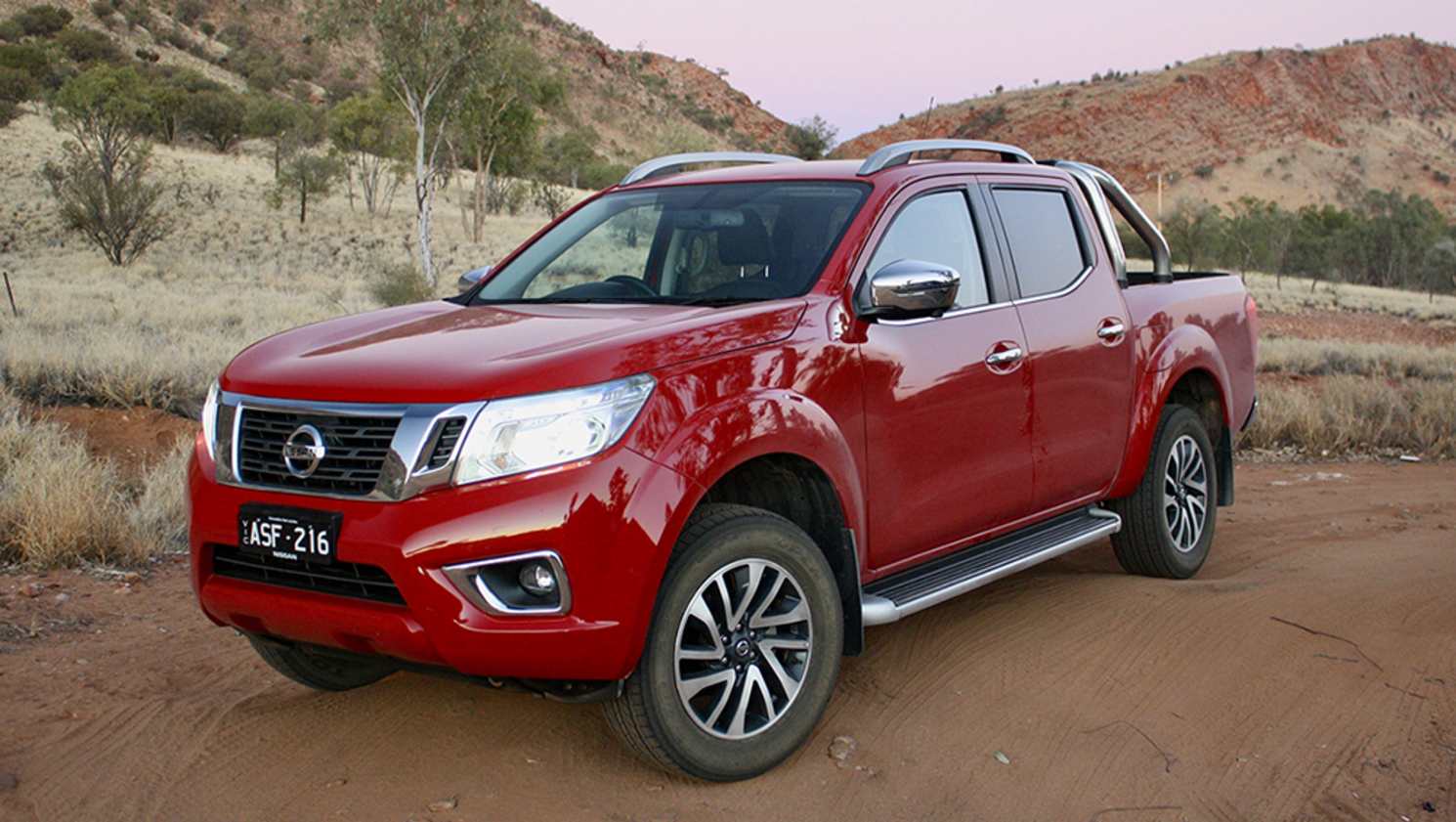
.jpg)
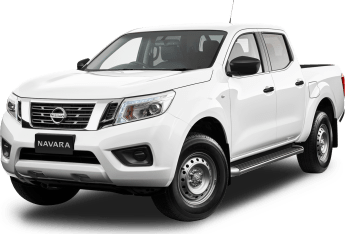
.jpg)
.jpg)
.jpg)



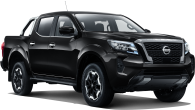



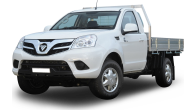

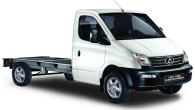

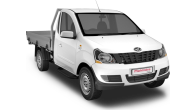


.jpg)
.jpg)



